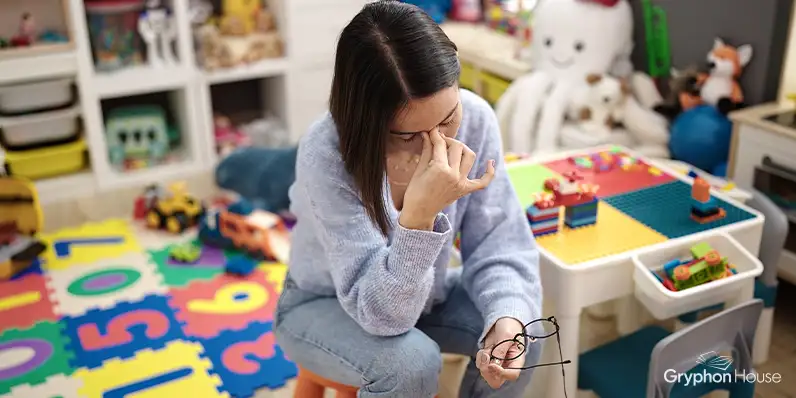
It’s that time of year again! With year-end assessments, hyper spirits awaiting the summer, and a year full of materials beginning to pile up in the classroom, it is no wonder educators begin to feel stressed! But hang in there; we have a few quick fixes that will leave you breathing a sigh of relief as you prepare for the last weeks of school. Prepare for:
1. Turning Down the Noise
As the last day of school draws closer, young children seemingly bubble with energy. As a result, classrooms can become quite noisy as children talk over you and each other. Here are a few strategies you can use to get students to settle down:
The Smile on a Stick
A “smile-on-a-stick” is fun to raise to your face. Draw different smiles; put each one on a jumbo craft stick. When the noise level is high, choose a smile from your collection and walk around the room with it placed just below your nose. It looks funny and it will capture the children’s attention long enough for them to focus on you while you say, “We are getting noisy. Can we lower the noise level please?”
Rain Stick
The sound of rain is always calming. Ask the noisiest child to be the rain stick girl or boy and walk around the classroom turning the rain stick on one end then on the other. It is remarkable how two or three rounds through the classroom reduces the noise!
2. Dealing with Interruptions
Along with the children’s growing excitement for summer, you’ll notice an increase in classroom interruptions as students find it harder to focus. While we cannot allow constant interruptions throughout the day, it is also important not to discourage children’s self esteem and to address immediate needs. To find a balance of both, here are a few strategies for positively influencing behavior.
Stop-and-Go-Hat
Purchase two baseball caps, one green and one red. When you are “open” for interruptions and questions, put on the green cap. Put on the red cap when you are “closed” for business. When the red hat is on, it means no interruptions. An alternative is a sign on a hat that says “go” on the front and “stop” on the back. Turn the hat forward when you are in help mode and backward when you are not.
“Ask Three, Then Me” and Study Buddies
“Ask Three, Then Me” is a rule that requires a child to seek the advice of three other children before coming to the teacher for help. The child who is asked to help becomes a “Study Buddy.” Select study buddies by putting all of the children’s names on jumbo craft sticks. Select pairs each Monday morning. Be thoughtful about whom you pair so that the children will work well together. If a child has a problem that cannot be resolved by either of these approaches, help the child when you are free. Encourage the child to set the problem aside until you can help.
3. Clearing the Clutter
It’s easy for things to pile up, especially when you arrive at the end of the school year. Past projects and assignments threaten to overwhelm your desk, books you’ve picked up along the way spill over, and scattered materials line the room. The best way to de-clutter is to have solid storage solutions and a clear system of labeling. Here are a few ways to clean up the classroom:
Copier Boxes
Save copier paper boxes and store materials inside by topic or by center. Label the front, side, or box top with a detailed list of the stuff inside. Take a few minutes when you put materials inside to detail the box contents. It will save you hours of searching later. An important characteristic of any good storage box is a removable lid.
Architectural Mailing Tubes
Have too many posters? Roll them up and place them inside architectural mailing tubes. Roll them with the front side out so they will roll against the wall and stay up when you stack them, rather than roll away from the wall and fall. Write the tube contents on a label on the outside of the tube. Finally, as you are cleaning up, make sure that if items are no longer useful that you throw them away! Otherwise items will continue to accumulate.
Did you enjoy the activities above? Find them along with other quick fixes for everything from big messes to small budgets in Sharon MacDonald's Sanity Savers. For even more resources on how to help young children de-stress at home, check out this guest post from Karen Peterson.
Author(s)Sharon MacDonald
A graduate of Western Carolina University with a BA in English, Brianna served as a marketing and editorial Intern with Gryphn House in the Summer 2018.
Topics: